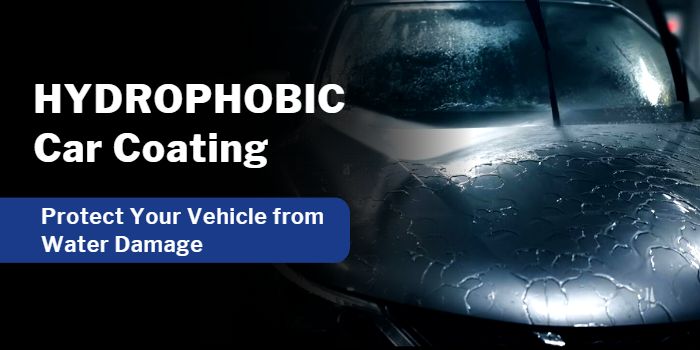
We all know about a vehicle’s number plate and often assume that it is its only identifier, but not a lot of people know what is a Vehicle Identification Number or VIN. VIN is colloquially also called a VIN number, although the ‘N’ in ‘VIN’ stands for ‘number’. How to read a vehicle identification number? Read on to find out all about this unique code.
What is a Vehicle Identification Number (VIN)?
The VIN of a vehicle may be compared to the fingerprint of a human being. A vehicle identification number is a 17 character code made of a combination of letters and numbers. If a vehicle has less than 17 characters in its VIN, typically 11 to 17, then it is a model of pre-1980s make. This code aims to identify specific vehicles; no two vehicles have the same VIN. On decoding, the VIN can provide information about the manufacturer of the automobile, the model year, and even the manufacturing plant in which it was made.
The above-mentioned information is definitely very significant for an automobile owner. But how to read a vehicle identification number? And how to find the VIN on your automobile?
How to locate the VIN
The Vehicle Identification Number may be found in front of the steering wheel. You can read it on the driver’s side in front of the dashboard, through the windshield in cars. It may appear on the door pillars on the driver’s side or even in front of the engine block.
In motorcycles, the VIN may be placed on the steering neck of the bike, or near the motorcycle’s motor.
In scooters, the VIN may be located in the glove box, under the dashboard, or printed right onto the frame.
How to Decode the Vehicle Identification Number
The vehicle identification number consists of 17 characters, including numbers and alphabets to display an automobile’s specifications, features, manufacturing details, etc. The VIN’s digits are divided into sections, and these sections each specify different information. There are various competing formats for calculating the VIN, but the ISO (International Organization for “Standardization) 3779 format is the most widely used one. The SAE (Society of Automotive Engineers) J853 format is very similar to the ISO 3779.
World Manufacturer Identifier Section
Characters 1 through 3, altogether, of the VIN, represent the World Manufacturer Identifier (WMI). WMI is assigned by the Society of Automotive Engineers, or SAE The first digit is the country of origin of the vehicle or the final manufacturing plant. Each number is assigned to a particular country of manufacture. For instance, for vehicles made in the U.S.A., the VIN begins with 1,4, or 5. The VIN begins with 2 for a Canadian-made vehicle. A Finnish-made vehicle’s VIN starts with Y; a Japanese-made vehicle’s VIN begins with J, and so on.
Automotive manufacturers who manufacture less than one thousand cars per year use the number 9 as the third digit of the VIN and additionally, use the 12th, 13th, and 14th character of the VIN as the second part of identification. Some vehicle manufacturers use the 2nd and 3rd digits to denote the vehicle type or category. For example, a Chevrolet truck’s WMI is 1GC- 1, for the United States of America, G, for General Motors (in the United States), and C for a truck. Some other examples of the World Manufacturer Identifier include: Hyundai India uses – MAL as its code. Toyota South Africa uses – AMT as its code.
Vehicle Description Section
The characters 4 through 9 belong to the Vehicle Description Section (VDS). The 9th digit is the check digit, and it is used to validate vehicles in the USA and Canada. It utilizes a certain formula to decode and it checks for its validation.
This section displays the body type, engine type, restraint system, transmission and other vehicle attributes. The usage of the check digit in the Vehicle Identification Number is inconsistent throughout the world; the 9th digit is not used as a check digit in Europe, but it is used as such in North America. The check digit is used to locate invalid VINs.
Vehicle Identifier Section
The characters 10 to 17 of the Vehicle Number Identifier make up the Vehicle Identifier Section and are unique to every vehicle. The positions 12 through 17 in the VIN constitute the actual serial number of the vehicle. This section specifies any installations, customization, transmission choices, and so on. The 10th and 11th characters specify the year of manufacture/assembly of the automobile and the factory/manufacturing plant the automobile was made/assembled in, respectively. There is quite a complex code for the year the 10th place denotes. For example, the number 9 in the 10th position indicates that the vehicle was manufactured in the year 2009. If the 10th position is occupied by the letter E, then it indicates that the vehicle was manufactured in 2014. The 11th character indicates the manufacturing plant code, as mentioned earlier, but it is mandatory only for vehicles made in North America and China.
The digits 12 through 17 are the unique serial number every vehicle receives on getting off the assembly line. It is chronologically assigned to every manufactured unit in a particular manufacturing plant.
Conclusion:
Altogether, these 17 characters create a Vehicle Identification Number that is unique to your car, moped, scooters, trucks, etc. and can be used to gain crucial information about it.
The VIN helps in assessing for insurance, checking for the authenticity of the automobile (in case of purchase of a pre-owned car/vehicle), verifying the engine’s authenticity, and tracking the vehicle in case of theft.
Now you know how to locate, read and decode the VIN of your vehicle. This opens up a treasure trove of information to you on your automobile, thus making you an empowered automobile owner. Try it out; try to locate and decode your vehicle’s VIN.
Want to share your knowledge with fellow vehicle owners? Share this article. And If you found this article informative, make sure to check out other interesting reads on the Carorbis Blog.








